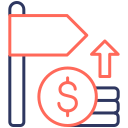Measure Your Money: Income, Essentials, and Investable Surplus
List wages, side gigs, refunds, and any recurring stipends. Consistency matters more than perfection for beginners building an investing budget. Start with last month’s statements and highlight reliable sources you can safely plan around.
Measure Your Money: Income, Essentials, and Investable Surplus
Rent, utilities, groceries, transit, insurance—estimate them using a three-month average. Round up slightly for safety. Over time, your estimates sharpen, confidence grows, and your investing line stops getting raided by surprise expenses.
Measure Your Money: Income, Essentials, and Investable Surplus
What remains after essentials and a modest buffer becomes your investing budget. Give it a label in your tracker so it feels non-negotiable. Tell us your number today, even if tiny—small consistent amounts add up powerfully.








